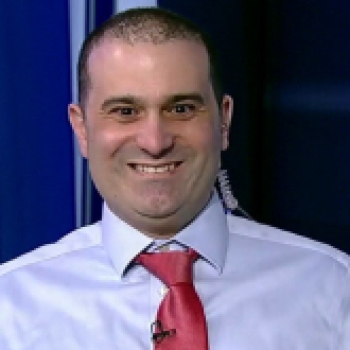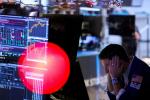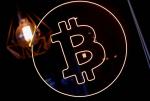
- All Instrument Types
- Indices
- Equities
- ETFs
- Funds
- Commodities
- Currencies
- Crypto
- Bonds
- Certificates
Please try another search

DAX: Inflation and Interest Rates Remain Key Issues

Consolidation was the motto of the Frankfurt Stock Exchange last week. After the price fireworks in response to the weaker-than-expected inflation in the USA in October, it was time to take a breather. More than 20 percent growth in the DAX since the low for the year at the beginning of October raises the question of whether this was the final fireworks or whether the optimistic mood on the markets will last until the end of the year.
On the plus side of the DAX is the significantly improved picture from a technical point of view with the crossing of the 200-day line and the breakout from the downward trend since the beginning of the year. On the debit sides are the 2,500-point gains of the past six weeks and the resulting temptation to take some of these profits. And whether the market has received proof with the October inflation in the USA that the peak in the price increase has also been reached cannot be said with certainty.
Missile strike in Poland
How fragile the foundation of the current recovery is when the war in Europe can escalate at any time was also shown in the middle of the week by the reaction of the stock market to the first reports of a missile strike in Poland, a NATO country. The later realization that it was part of a Ukrainian defense missile did provide relief.
However, the development makes clear how nervous investors are about this issue, and rightly so. Uncertainty remains over whether and when the US Federal Reserve will take a break in its interest rate hike cycle. Members of the board, at least, never tire of emphasizing that there is still a lot of work ahead of the Fed.
Governor Bullard sees the peak for key interest rates between five and seven percent, while the market is currently only pricing in the lower end of this range. The verbal tug-of-war between monetary policy and the financial market will likely continue in the coming week.
The next facts will not be known until the Fed meeting on Dec. 14. What will happen to China's interest rates will be decided on the first trading day of next week. In the last monetary policy report, the central bank warned of a possible increase in inflationary pressure in the future but still wants to maintain growth in the money supply and lending and thus ensure sufficient liquidity in the economy.
Christmas business becomes a litmus test
The upcoming Christmas season could also answer the crucial question of where the stock market will go in the coming months. Consumption is the pillar supporting the economy, but thus also its Achilles heel. The litmus test will be whether or not people will let increased prices and higher living costs spoil their festive spending mood.
The warnings from the companies, at least, are not ending. After Apple (NASDAQ:AAPL) and Amazon (NASDAQ:AMZN), the US retailer Target (NYSE:TGT) also issued a gloomy forecast this week, and its shares fell by double digits. On the other hand, the Siemens (OTC:SIEGY) share went up by more than seven percent.
In Munich, the financial year is going much better than expected. For 2022, the company expects an increase in turnover of up to nine percent. Especially in the future field of digitalization, Siemens expects double-digit growth rates. It is a strong signal that in times of economic uncertainty, the order books at Siemens are full.
Wage-price spiral sets in motion
Following collective bargaining, wages in the German metal and electrical industry will rise by 8.5 percent over the next two years. On the other hand, what is positive for the purchasing power of employees sets in motion a dangerous wage-price spiral that is now turning much faster than in the past.
This brings another inflation driver into play. With every sector that now follows suit, the effect intensifies. According to the head of the German Council of Economic Experts, too, the situation on the price front will not return to normal until 2024. So, the pressure remains on the European Central Bank and, thus, on the stock market, which fears rising interest rates like the devil fears holy water.
DAX - current supports and resistances
- Supports: 14,150/14,100 + 14,050/14,000 + 13,850/13,800
- Resistances: 14,350/14,400 + 14,550/14,600 + 14,750/14,800
Related Articles

Stocks fell sharply, with the S&P 500 leading the decline, finishing the day down almost 1.6% at 5,860. Meanwhile, the Nasdaq 100 dropped nearly 2.75%, closing at 20,550. This...

The stock market has hit a rough patch lately, with the benchmark SPDR S&P 500 (NYSE:SPY) sliding nearly 3% in a single week. Most sectors have followed the downward trend,...

Regimes are changing in the market, and this could mean a few things, but today, it means that volatility is back. Whenever these shifts come, specifically to the S&P 500...
Are you sure you want to block %USER_NAME%?
By doing so, you and %USER_NAME% will not be able to see any of each other's Investing.com's posts.
%USER_NAME% was successfully added to your Block List
Since you’ve just unblocked this person, you must wait 48 hours before renewing the block.
I feel that this comment is:
Thank You!
Your report has been sent to our moderators for review




Add a Comment
We encourage you to use comments to engage with other users, share your perspective and ask questions of authors and each other. However, in order to maintain the high level of discourse we’ve all come to value and expect, please keep the following criteria in mind:
Enrich the conversation, don’t trash it.
Stay focused and on track. Only post material that’s relevant to the topic being discussed.
Be respectful. Even negative opinions can be framed positively and diplomatically. Avoid profanity, slander or personal attacks directed at an author or another user. Racism, sexism and other forms of discrimination will not be tolerated.
Perpetrators of spam or abuse will be deleted from the site and prohibited from future registration at Investing.com’s discretion.